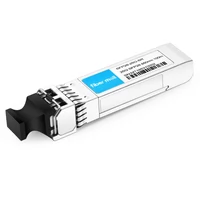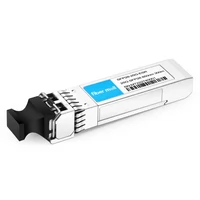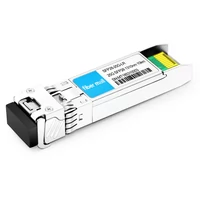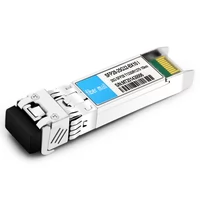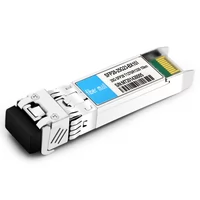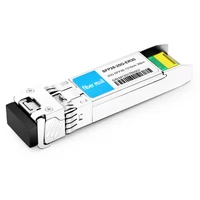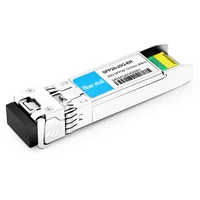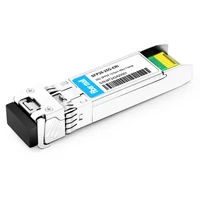The Cisco SFP28 transceiver modules are a significant step forward in high-speed data transmission within the networking industry. It is essential to know about these modules as more and more companies require larger bandwidths for cloud computing, data center interconnection, and high-frequency trading. The purpose of this manual is to clarify what Cisco SFP28 transceivers are all about so that readers can have a good understanding of their operations, compatibility as well as usage in different network designs. With this document, people working with networks will get detailed explanations and technical specifications, which should enable them to use SFP+ technology effectively, thus achieving maximum performance levels while scaling up modern networking environments according to need.
Table of Contents
ToggleWhat is a Cisco SFP28 Transceiver Module?
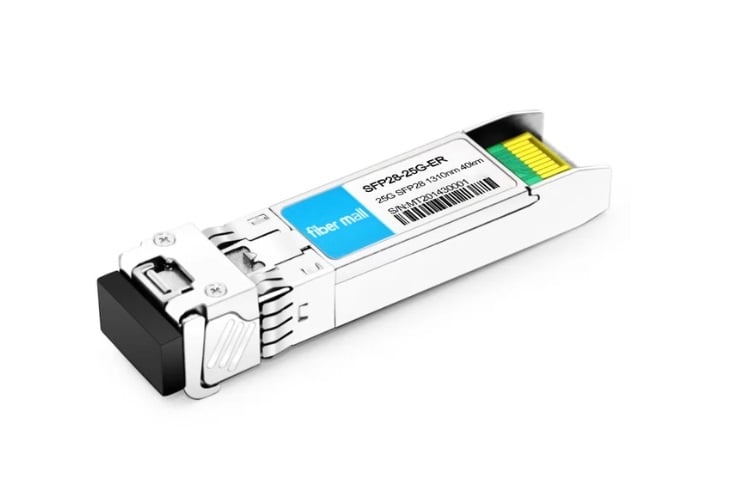
Understanding the Basics of SFP28
Designed for a 25 Gbps data rate, the Cisco SFP28 transceiver module effectively fills the space between the previous SFP+ modules, capable of supporting only up to 10 Gbps and more advanced systems such as QSFP28, which can handle 100 Gbps. These small form factor devices, known as SFP28 modules, can be used with existing ports of both SFP and SFP+ types thus providing a great advantage for network upgrading. The modules use electric signaling that allows them to transmit data over different media, including fiber optics, which greatly increases bandwidth efficiency but keeps the device compact at the same time. Due to their multi-functionality, this kind of product is applicable in various spheres like enterprise networks or telecoms, so it solves the problem of faster connection required by growing data centers as well as better performance across all networks.
Features of Cisco SFP28 Transceiver
The Cisco SFP28 transceiver module possesses some distinct features which make it more efficient and usable in modern networking environments. These features include:
- Data Rate: Supports 25 Gbps which is a considerable bandwidth increase compared to previous models of SFP+.
- Backward Compatibility: It can work well with interfaces such as SFP and SFP+ thus able to integrate easily into existing network infrastructures.
- Compact Form Factor: This model retains its small size thereby making it suitable for environments with limited space as well as promoting better heat dissipation management.
- Variety of Media Types: Designed for use across different types of transmission media like multimode or singlemode fiber so that there’s more flexibility in deployment options.
- Hot-Swappable Design: With this design, you can replace or install transceivers without powering off the system, reducing downtime during upgrades or maintenance activities.
- Enhanced Signal Integrity: Uses advanced signaling technologies which enable error-free transmissions over longer distances thereby guaranteeing reliable data communication.
These characteristics collectively give IT professionals what they need to create high-performance solutions that are suited to the changing needs associated with their network architectures.
Comparing SFP28 with Other Transceiver Types
Different types of transceivers have technological differences when compared to SFP28. For instance, SFP+ and QSFP28.
- Speed: The data rate for the SFP28 is 25 Gbps, which is twice that of SFP+(12 Gbps) but still falls behind QSFP28’s lower limit capacity of 100 Gigabits per second. Thus making it ideal for medium-speed links where high bandwidths are not necessarily required as in the case of QSFP.
- Size: Like SFP+, the size of an SFP28 transceiver remains compact while being smaller than what you would find on a QSFP module thus enabling more ports per density in network devices. This consistency in sizing makes them fit easily into existing setups which already make use of former versions such as Sfp plus modules.
- Interoperability/Compatibility: These modules can work with other interfaces like fiber optic cables or copper wiring connections because they are backward compatible with both single-mode dual mode fiber (SMF / MMF ) types used by previous generations – sfp & sfp+. On the flip side quad lane systems like qsfp require four times as many channels thus necessitating forklift upgrades if one wanted to make them play nice together under same network infrastructure roof;
- Use cases: It is designed for high-speed interconnections within data centers and enterprise networks, especially when dealing with things like 25GbE (Ethernet) connections. While this was happening, people were still using sfp plus modules heavily due to their low cost nature besides being capable enough for legacy systems while Qsfp can handle heavier loads such huge file transfers or bandwidth intensive applications hence its popularity among those engaged in large scale IT operations requiring lotsa juice!
Sums up: Lastly, I’d say that this device strikes performance against compatibility balance, therefore making sure all bases are covered during modern-era communication settings while having some advantages over both sfp+ and qsfp28 in specific deployments.
How to Choose a Compatible SFP28 Module?
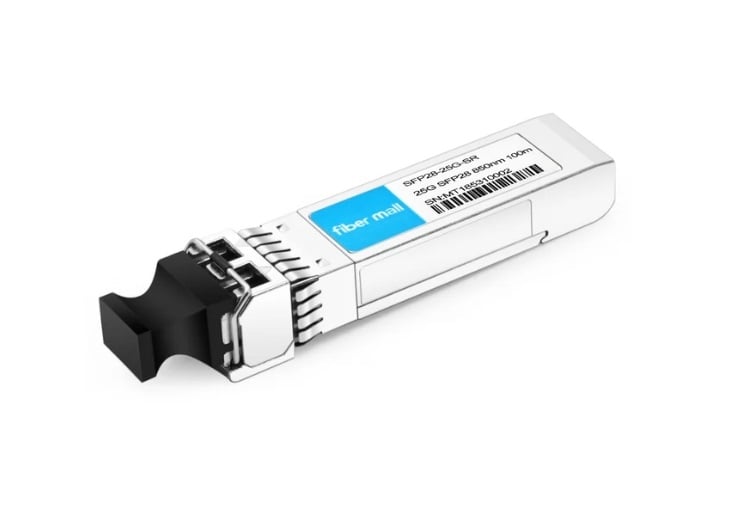
Factors to Consider for Compatibility
To ensure the best performance and integration in your existing network infrastructure, there are a number of important considerations to take into account when choosing an SFP28 module that is compatible.
- Supported standards: Confirm that the sfp28 module conforms with IEEE 802.3 standard for 25 Gigabit Ethernet so it can work with other devices on the network using different protocols. It may also need to be backward-compatible with both SFP+ and SFP interfaces.
- Optical reach: Assess your particular application’s optical reach needs to determine what is required. This varies among different types of sfp28 modules, such as short-range (SR), long-range (LR), or extended-range (ER). You should choose one that meets the necessary distance without degrading the signal quality.
- Vendor compatibility: Make sure that selected vendor’s product works well together with other brands’ items in use within your system as some proprietary features adopted by vendors might negatively impact third-party products’ performance. Always follow the hardware manufacturer’s recommendations or certifications when selecting modules.
Examining these points closely will help you decide wisely and pick out an appropriate sfp28 module that will provide dependable and efficient performance aligned with your network’s requirements.
List of Cisco SFP28 Compatible Devices
To select Cisco SFP28 compatible devices, you can use these models as they are known for supporting SFP28 modules:
- Switches of the Cisco Nexus 9000 Series: These switches are able to support SFP28 modules over many configurations, which makes them perfect for data centers that require high performance.
- Switches under the Cisco Catalyst 9300 Series: These switches were made with enterprise networking in mind; therefore, they can be used together with SFP28 modules to allow fast connections in densely populated areas.
- Cisco ASR 9000 Series Routers—These routers have been built strong enough for service provider networks or large enterprises that may need more powerful services like those offered by SFP28 modules.
If you want your network to work without problems, make sure that it is compatible with these types of equipment. This will make integration easier.
Ensuring Compliance with MSA Standards
In order to ensure compliance with MSA (Multi-Source Agreement) standards while choosing the SFP28 modules, it is necessary to make sure that these modules follow certain technical specifications which are described in this agreement. This includes checking if they have parameters like the optical wavelength, maximum link length and signal transmission rate corresponding to MSA benchmarks among others. Furthermore, you should also verify if the form factor of the module matches its pin configuration as well as the electrical characteristics stipulated by MSA so that they can work together across different vendors’ devices without any problem. Manufacturers should always update their documentation based on new MSA standardization. Thus, you need to keep on reviewing them frequently for continued conformity, which guarantees the better performance of your network infrastructure according to AI rules.
What are the Applications of SFP28 Transceiver Modules in Data Centers?
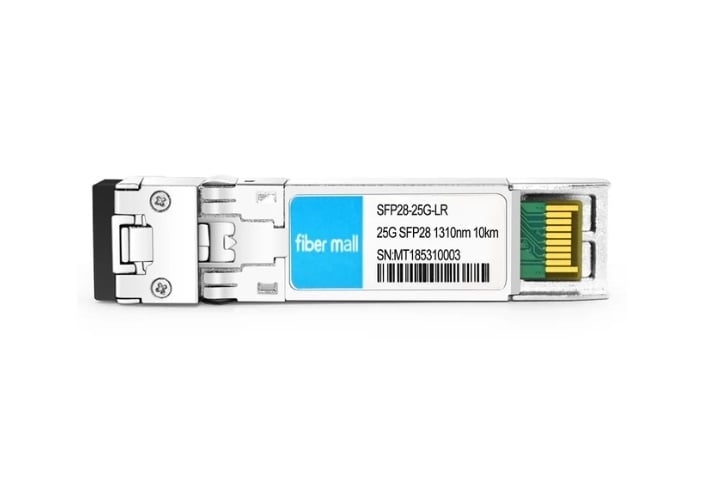
Role of SFP28 in Modern Data Centers
Modern-day data centers highly depend on SFP28 transceiver modules which are used to send data at speeds as high as 25 Gbps per channel. The modules offer a compact connectivity solution for servers, switches, and storage devices, ensuring low latency and power consumption. Moreover, SFP28s are capable of supporting different applications, such as quick interconnections in cloud computing, big data analytics, and virtualized environments. They can also scale easily with existing SFP+ infrastructure thereby allowing the data center to keep pace with growing bandwidth requirements without compromising operational efficiency.
Using SFP28 for 25G Ethernet
For 25G Ethernet applications, SFP28 transceiver modules are created to provide an upgrade path from the existing 10G SFP+ modules. Compatibility and configuration of the associated networking equipment, such as switches and routers, need to be checked during the implementation of SFP28 for 25G Ethernet, which supports higher data rates. These modules follow IEEE standard 802.3by so they always perform well over short and long distances connections. Moreover, this also leads to better utilization of bandwidth through efficient data center flexibility while meeting high-performance computing task requirements.
Performance Benefits of Cisco SFP28
A lot of work has gone into creating Cisco SFP28 transceiver modules so that they can provide multiple important advantages for data centers. Initially, this is achieved by supporting extensive thermal management which prevents overheating during high-speed data transmission, thus enhancing the reliability and lifetime of network devices. Next, Cisco’s SFP28 module offers strong signal integrity because it is engineered with advanced technology against jitter as well as electromagnetic interference (EMI), reducing any impact these may have on their performance within dense data center environments. Additionally, Cisco also delivers robust software support together with management capabilities that enable monitoring of real-time performance metrics by administrators who can then use such information in implementing proactive maintenance strategies; this not only improves overall network efficiency but ensures smooth scalability when there are increasing demands for data, too. Finally, being committed to interoperability means ease of integrating other vendors’ equipment with Cisco’s through different methods hence making it flexible during upgrades or transitions while minimizing downtime periods.
How Does Quality Testing Ensure Reliable SFP28 Performance?
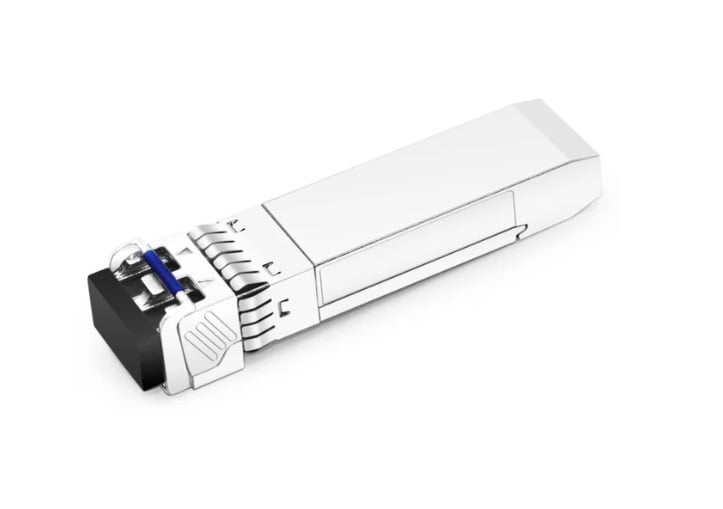
Overview of Quality Testing Procedures
To help ensure dependability in a variety of situations, quality testing for SFP28 modules requires going through many strict assessments. Some of these tests include:
- Environmental Tests – It is important to know if the module will be able to handle extreme temperatures, levels of humidity, and vibrations so that it can remain resilient and durable.
- Electrical Tests – Current consumption, signal integrity and jitter are tested in order to determine consistent and optimal data transmission rates.
- Optical Tests – Throughput, wavelength accuracy and return loss should be evaluated to ensure that light is transmitted effectively.
- Compatibility Tests – SFP28 modules need to work seamlessly with different platforms as well as vendors’ equipment thus they should be tested against this requirement for interoperability and ease of integration.
- Long-Term Reliability Testings – The implementation stresses over extended periods and help foresee lifespan while identifying potential failures, thereby improving product reliability through Cisco SFP28 Modules.
These detailed protocols of quality control end with the affirmation that Cisco SFP28 modules meet high standards performance wise and reliability during data center operations.
Importance of Dom (Digital Optical Monitoring)
To keep SFP28 modules operating at their best, Digital Optical Monitoring (DOM) must be used so that key operational features can be seen in real time. By doing this, it becomes possible to monitor optical power levels, temperature, and error rates continuously and thereby rapidly detect potential issues. Such a preventive method guarantees stable data transmission, reduces downtimes as well as improves the reliability of the whole system. Additionally, data from DOM could be used for predictive maintenance, which increases the lifetime and performance of network devices. Eventually, including DOM in SFP 28 modules improves efficiency in operation while supporting strong data center management systems.
Certifications for Cisco Transceivers
Cisco transceivers are very carefully selected in order to meet all the industry standards and certifications necessary for their reliability and performance. Here are some of the most important attestations:
- Standards compliance according to IEEE: By following relevant IEEE regulations such as 802.3, it is possible to guarantee inter-operability between different network systems.
- RoHS Compliance: This is in accordance with the Restriction of Hazardous Substances Directive, which requires that products not contain certain dangerous materials.
- CE Marking: This shows that these devices have been manufactured so as to meet European health safety environmental protection standards.
- FC Certification – Fiber Channel verifies data integrity and performance within storage area networks
- Telec Certification – meets Japanese telecoms regulations, making it easy for them to be used there, too.
These certifications prove that Cisco ensures the quality, safety, and compatibility of its transceivers with other devices.
FAQs About Cisco SFP28 Optical Transceiver Modules
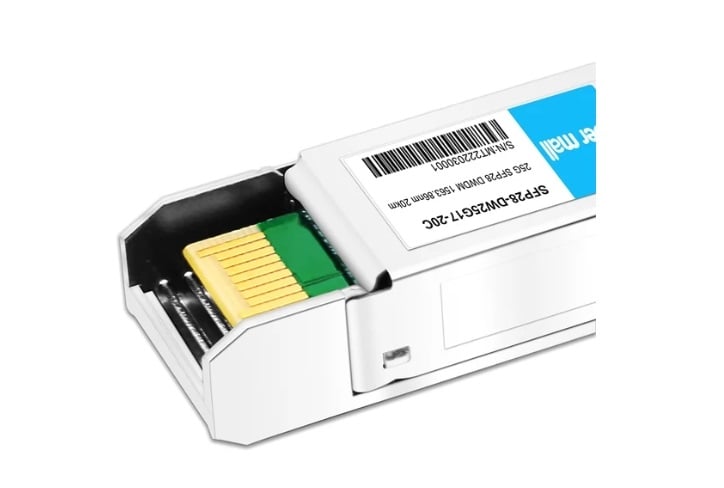
What is the Maximum Range of Cisco SFP28 Transceivers?
Cisco SFP28 transceivers have the capacity to bear data rates of 25 Gbps. The maximum range changes with each type of optical or copper cable used. For instance, an SFP28 SR (Short Range) transceiver can reach up to 300 meters over multimode fiber with OM4 cable while an SFP28 LR (Long Range) transceiver can extend up to 10 kilometers over single-mode fiber. However, these maximum distances could be affected by the application at hand and environmental factors; thus, it is advisable to check with Cisco’s product specifications for accurate range capabilities which suit your deployment needs.
Can SFP28 Modules use SMF and MMF Cables?
Certainly, SFP28 modules were created to be adaptable and can work with both single-mode fiber (SMF) and multimode fiber (MMF) cables. The decision between SMF and MMF is dependent on the specific transceiver type as well as the distance needed for deployment. Designed primarily for MMFs, short-range applications are supported effectively by SFP28 SR modules, whereas those using SMFs cover longer distances due to their design – this is where you should use SFP 28 LR module types. Therefore it’s important that one chooses an appropriate transceiver based on cable type and intended use so as to achieve the best performance possible in terms of connectivity too.
How to Install and Configure an SFP28 Transceiver Module?
Setting up and configuring the SFP28 transceiver module is not that complicated but it must be done with extreme precision for it to work efficiently. Before anything else, switch off the device that will contain this transceiver so as to protect it from electrical error. Once you have done that then take this SFP28 module and slip it gently into its corresponding port making sure they are well aligned before pushing all the way down until full contact is made between two devices; if needed secure tightly after insertion, if not just let them be. After finishing up with the physical installation then, power on your machine again. Configuration usually involves opening the management interface of a network device and checking whether or not our recently added fiber optic cable has been detected by the system yet or not; if yes we can proceed further while if no steps should be taken immediately in order to rectify this problem because without right settings everything might fail completely at some point later on.
You might need to type specific commands or use configuration tools provided by the manufacturer in order to set parameters like speed, and duplex mode among others hence do so where necessary depending on what brand name of the product you are working with currently so that everything works out fine without any complications arising later due wrong choice made during initial setup process. Always refer configuration guide given alongside particular item purchased for more accurate information concerning how best one can configure his/her own hardware according specifications required within their local networks
Reference Sources
Frequently Asked Questions (FAQs)
Q: For data, what does a Cisco SFP28 optical transceiver module do?
A: The Cisco SFP28 optical transceiver module is a device used for transmitting and receiving data over fiber optic cables. It’s designed to fit into an SFP28 port on a switch, router, or other network equipment, providing high-speed connectivity for data center applications.
Q: What are the common usage scenarios of Cisco SFP-25G-LR-S?
A: Long-range connectivity is usually achieved in data centers with the help of Cisco SFP-25G-LR-S. It operates at 1310nm and can transmit up to 10km of data over single-mode fiber (SMF). It is best suitable for connecting different parts of a data center or linking remote sites together.
Q: In comparison with previous 10G and 40G standards, what does 25G SFP28 offer?
A: Cost vs performance balance is provided by the 25G SFP28 which has higher bandwidth than 10G but also better efficiency and easier deployment than 40G. Enables scalable network upgrades and is designed for space & power-efficient environments in data centers.
Q: In the context of SFP28 transceiver modules, what does DOM Duplex LC mean?
A: In terms of temperature and power levels monitoring, its operational parameters’ real-time capability is referred to as DOM (Digital Optical Monitoring) Duplex LC by the transceiver. The full-duplex communication dual-fiber connector type used is Duplex LC.
Q: Are there various types of Cisco SFP28 transceivers available for different applications?
A: Yes, there are various types of Cisco SFP28 transceivers available, such as Cisco SFP-25G-LR-S, which is designed for long-range applications (10km at 1310nm), and Cisco SFP-25G-SR-S, which is designed for short-range applications (up to 100m at 850nm). Each type is optimized for specific distances and wavelengths.
Q: Why is the Cisco SFP-25G-SR-S suitable for short-range data center applications?
A: It’s considered a good choice for use within close distances in data centers because it works at 850nm and can transmit data up to 100m over multimode fiber optic cable (MMF). This transceiver is mostly used to connect top-of-rack switches with aggregation switches within the same data center.
Q: What does it mean to be compliant with the SFP28 MSA?
A: Being compliant with the Multi-Source Agreement (MSA) ensures that different vendors’ transceivers can work together. This means that there will be no problems when using any type of 25GBASE-SR SFP28 transceiver from any supplier on any network if it adheres to the standards set forth by the MSA organization. In other words, compliance guarantees electrical and mechanical interoperability between various brands of these modules, thus making them plug-compatible among themselves and with all systems supporting this standard, including those made by Cisco Systems Incorporated.
Q: Can I use a compatible SFP28 transceiver for my Cisco equipment?
A: Yes, you can use any third-party or non-Cisco branded module that meets the necessary technical specifications required by Cisco systems for operation within their devices. Such devices should comply with all relevant industry standards, such as IEC/EN/ISO safety norms, among others, but there are no restrictions that limit usage based on proprietary reasons like vendor lock-in, etcetera. These devices offer comparable performance levels while being cheaper than genuine ones; hence, they represent viable alternatives, especially when budgets are tight.
Q: What are Active Optical Cables (AOCs)?
A: Active Optical Cable (AOC) refers to an integrated assembly where both optical transmitter/receiver functions reside inside a single housing unit. This unit also incorporates electrical-to-optical (EO) conversion circuitry at one end while providing optical-to-electrical (OE) conversion at its opposite extremity. It allows for direct connection between two points within network infrastructure without having to rely on intermediate patch panels or other passive elements often found in such environments.
Q: What are some benefits of using 25GBASE SFP28 modules in a network?
A: Using 25G SFP28 transceivers in a network has several advantages, including more bandwidth compared to the previous 10G standard, lower power consumption, and better scalability for future growth. These features make them perfect for dense environments like data centers, where multiple servers need to communicate fast with each other over short distances.
Related Products:
-
 Cisco SFP-25G-SR-S Compatible 25G SFP28 SR 850nm 100m LC MMF DDM Transceiver Module
$25.00
Cisco SFP-25G-SR-S Compatible 25G SFP28 SR 850nm 100m LC MMF DDM Transceiver Module
$25.00
-
 Cisco SFP-10/25G-CSR-S Compatible 25G SFP28 ESR 850nm OM3 200m/OM4 300m LC MMF DDM Transceiver Module
$35.00
Cisco SFP-10/25G-CSR-S Compatible 25G SFP28 ESR 850nm OM3 200m/OM4 300m LC MMF DDM Transceiver Module
$35.00
-
 Cisco SFP-10/25G-LR-S Compatible 25G SFP28 LR 1310nm 10km LC SMF DDM Transceiver Module
$45.00
Cisco SFP-10/25G-LR-S Compatible 25G SFP28 LR 1310nm 10km LC SMF DDM Transceiver Module
$45.00
-
 Cisco SFP-25G-BXD-I Compatible 25G BX BIDI SFP28 TX1330nm/RX1270nm 10km LC SMF DDM Industrial Transceiver Module
$50.00
Cisco SFP-25G-BXD-I Compatible 25G BX BIDI SFP28 TX1330nm/RX1270nm 10km LC SMF DDM Industrial Transceiver Module
$50.00
-
 Cisco SFP-25G-BXU-I Compatible 25G BX BIDI SFP28 TX1270nm/RX1330nm 10km LC SMF DDM Industrial Transceiver Module
$50.00
Cisco SFP-25G-BXU-I Compatible 25G BX BIDI SFP28 TX1270nm/RX1330nm 10km LC SMF DDM Industrial Transceiver Module
$50.00
-
 Cisco SFP-25G-iER-S Compatible 25G SFP28 ER Lite 1310nm 30km LC SMF DDM Transceiver Module
$165.00
Cisco SFP-25G-iER-S Compatible 25G SFP28 ER Lite 1310nm 30km LC SMF DDM Transceiver Module
$165.00
-
 Cisco SFP-25G-ER40-S Compatible 25G SFP28 ER 1310nm 40km LC SMF DDM Transceiver Module
$125.00
Cisco SFP-25G-ER40-S Compatible 25G SFP28 ER 1310nm 40km LC SMF DDM Transceiver Module
$125.00
-
 Cisco SFP-25G-ER-I Compatible 25G SFP28 ER 1310nm 40km LC SMF DDM I-temp Transceiver Module
$360.00
Cisco SFP-25G-ER-I Compatible 25G SFP28 ER 1310nm 40km LC SMF DDM I-temp Transceiver Module
$360.00

